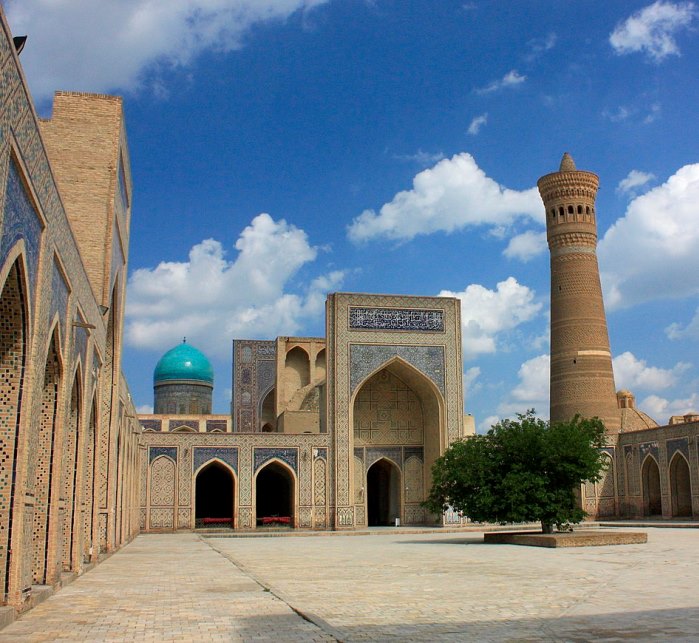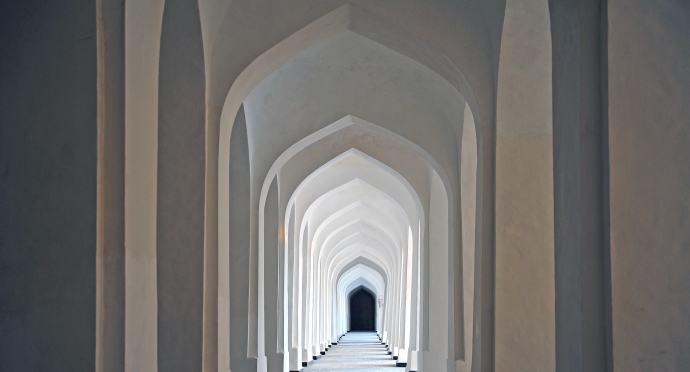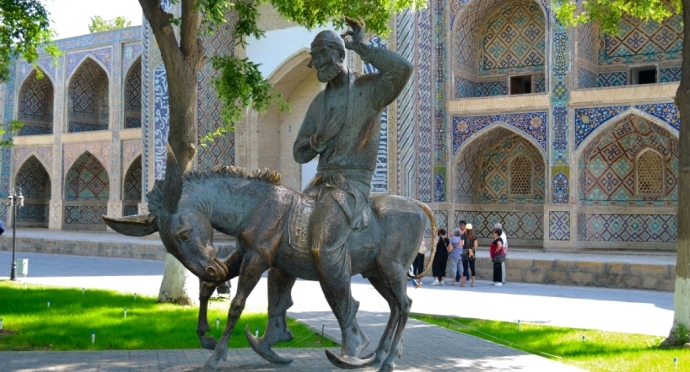 EN
ENBukhara, the holy city of Uzbekistan
Bukhara has had an almost untouched historical center since the 16th century, where Muhammad Shaybani began the latest reconstruction of the city, where up to 140 monuments from different eras have been preserved. Many cities in Central Asia have used this design as a model. For 2,500 years, Bukhara was the cultural, intellectual and religious center of the entire Amudarya River valley, not only due to its exceptional architecture. The City of Fortune is a must-visit destination in Central Asia, even more so than Samarkand.
Poi-Kalyan Temple in Bukhara
The Bukhara oasis was inhabited for approximately 5000 years. Here the Sapallin and Aryan cultures came together, gradually moving closer to the Sogdians, with the main center in Samarkand. Pasha was founded by the unification and fortification of three settlements around 500 BC. It was under the rule of the Persians, who used it as a place of worship for the goddess Anahita. Trade, which has always distinguished Bukhara, was facilitated by the celebration of holidays in its honor and the exchange of idols. In the first centuries AD, the Silk Road was laid out and was supposed to pass here. Mongol tribes took control of the city due to the Persian power vacuum. After the separation from Persia, it became a place of refuge for Christian groups, which increased the wealth of the capital. Even though Bukhara was conquered by the Arabs in 650, it had such a strong identity that it resisted the new religion for over a hundred years.
When the inhabitants of Bukhara saw him as their own, that is, when their Samanid dynasty accepted him, Islam managed to take root. Under the new religion and Persian identity, this dynasty formed a political opposition to Baghdad. Bukhara's golden age was characterized by its being an important intellectual and economic center with a population of 300,000 inhabitants. The advent of the new millennium brought with it new Mongol threats from the north. The city became dependent on several Turko-Mongol khanates and empires. The city was captured by Genghis Khan. Although it did not lead to its demise like others, its effects were felt during a period of decline that included the increased role of Samarkand under Tamerlane. In the 16th century, the Shaybanids turned it into their capital. The emirate was founded in 1785 and governed Samarkand and most of the Amu Darya valley. Throughout the 19th century, this emirate existed, despite numerous attempts at colonization by the British and Russians, until it was finally granted this land in 1920.
Access to the Ark citadel in Bukhara.
The city center is Labi Hawz. After the Soviets left, this is the only pond that still exists. The others were closed due to lack of hygiene, but this one was saved thanks to three buildings. The Ark Citadel has been a political and military center for 1,500 years. Its 790-metre 16th-century clay walls, up to twenty meters high, are still impressive, although they have lost their significance as such. A few meters to the south is Poi-Kalyan, the most important religious complex of Bukhara. First built in the 8th century, it did not withstand the attack of Genghis Khan. Its famous 12th-century minaret is the only one that has survived. The fired bricks are 46 meters high and descend in width until they reach the treated cornice. The rest of the building dates to the 16th century and is similar in size to Samarkand, with 288 domes, the largest of which is bright blue. A small 10th-century gem, the Ismail Samani Mausoleum is one of the oldest monuments in Central Asia.
This is just a small part of the extensive list of Bukhara monuments that can be visited in two full days. The city currently has a population of 300,000 and is an important destination for tourists traveling to Central Asia. It is well connected by highway, train and boat. It is customary to connect it with Samarkand by road, since the distance between them is 270 kilometers. From Labi Khaza to the Poi Kalyan area there is a network of bazaars called takis. In them we can find several establishments: in Telpak you can find all textiles and carpets, and in Zaragon you can find jewelry. The first one also has a very popular hammam. Each spring, the recent Silk and Spice Festival strives to keep the city's traditions alive.


Bukhara

This is an ancient citadel and one of the most impressive sights in the city of Bukhara. This massive fort served as the residence of the rulers of Bukhara for many centuries and is an important historical and cultural monument.

This is one of the most picturesque and popular places in Bukhara. The name "Lyabi-Khauz" is translated as "by the pond" or "near the reservoir", which reflects its central element - the pond (hauz), surrounded by ancient buildings and shady trees.

One of the most outstanding architectural complexes in Bukhara, which is a symbol of the city and one of its main attractions. The name "Poi-Kalyan" is translated as "Foot of the Great", which refers to the majestic Kalyan minaret located here.
 RU
RU ES
ES UZ
UZ